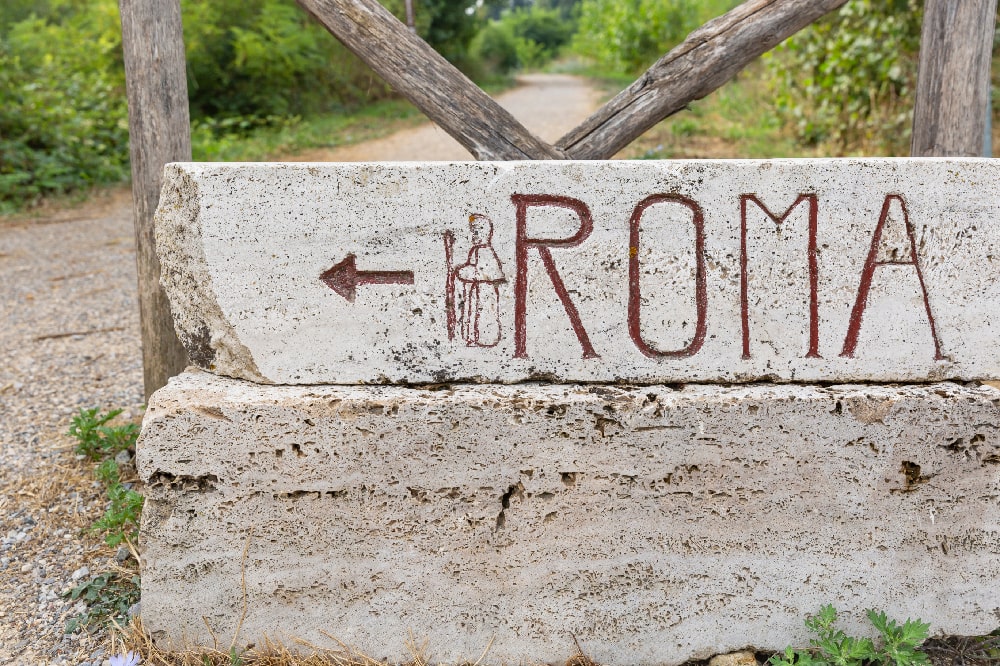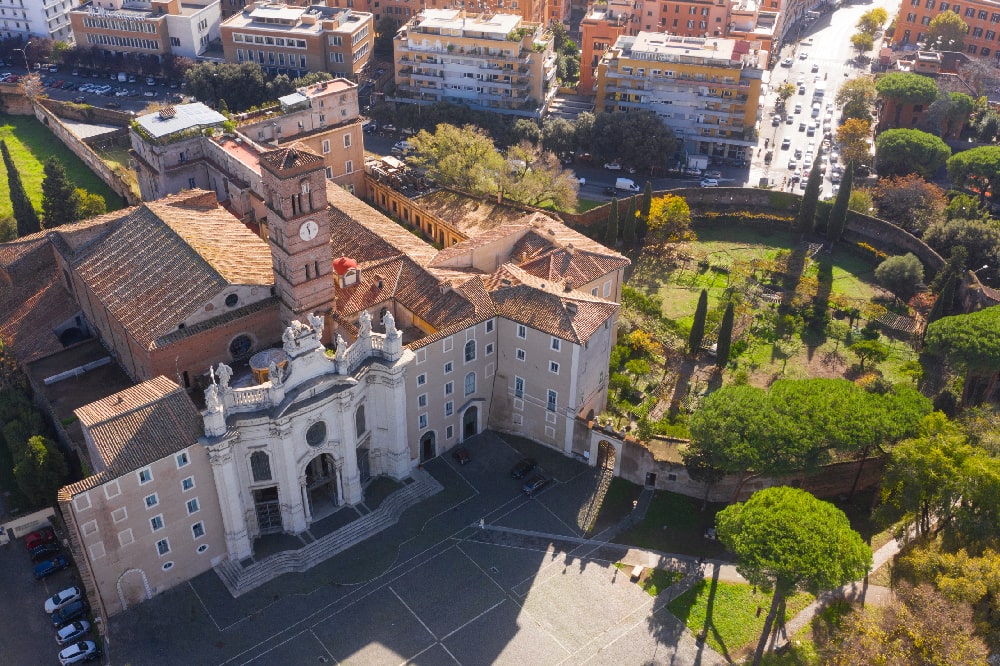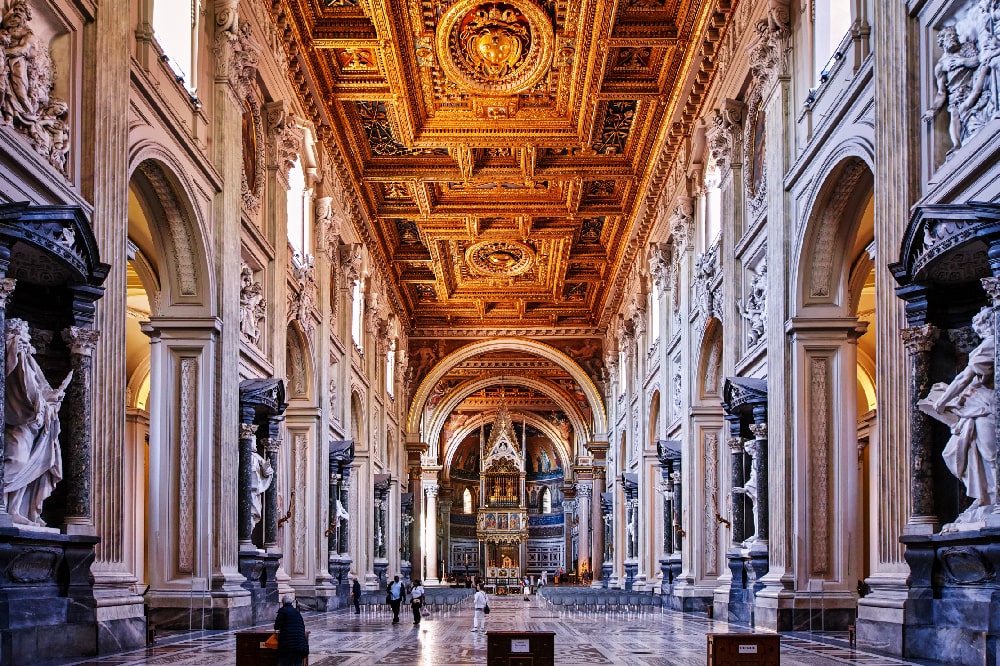The Advent Crown in church and at home: what does it symbolise? When should the first candle be lit? Let’s find out together.
Contents
- 1 What does Advent symbolise?
- 2 What is the colour of Advent?
- 3 What are the four Sundays of Advent called?
- 4 When does the first Sunday of Advent begin?
- 5 When do you light Advent candles?
- 6 How do you light the Advent wreath?
- 7 What are the names of the Advent candles?
- 8 What are the four colours of Advent candles?
- 9 How do you use Advent candles?
- 10 When to blow out the first Advent candle?
Sunday, 28 November was the first Sunday of Advent: it’s time to light the Advent Wreath candles in church and at home. We have entered that time of the year that most of all for Christians symbolises the eager expectation of the coming of Christ, of the renewal of His miraculous birth, but also the hope for His return, at the end of time. It’s not just about celebrating the approach of Christmas. Advent is more than a Christmas tradition: it is a well-defined liturgical period that, like all liturgical times, requires a particular attitude on the part of those who believe, who must prepare their soul to live in the best way this particular moment of faith and hope.
Let’s briefly see everything that is appropriate to know about Advent and in particular the Advent Crown in church and at home.

The liturgical year: let us clarify
The liturgical times of the Catholic Church are the seasons in which the liturgical year is divided. Let’s explore these together! …
What does Advent symbolise?
Advent is the period before Christmas, during which Christians await (from the Latin adventus, “waiting”) the birth of Jesus with penance, prayer and faith. Each week of Advent is symbolised by one of the candles that we find in the Advent Crown, a Christmas decoration that cannot be missing in a Christian home. It usually consists of a circle of evergreen branches, which recall the winter season, but also eternal life and the triumphant entry of Jesus into Jerusalem, and four candles, a symbol of salvation and of the light that drives out darkness and sin. The circular shape of the Advent crown refers to eternity, to the unity of the whole. It stems from a tradition of Germanic origin, which dates back to the early nineteenth century.
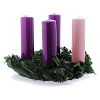
What is the colour of Advent?
The liturgical colour of Advent is purple, which recalls penance, fasting and waiting, as well as mourning.
What are the four Sundays of Advent called?
The names of the Sundays of Advent are taken from the first words of the introit, the antiphon that opens the celebration of Mass on the aforementioned Sundays:
- Advent Sunday: Ad te levavi animam meam (“To you, Lord, I lift up my soul”), from Psalm 24-25;
- Advent Sunday: Populus Sion (Populus Sion, excepting Dominus veniet ad salvandas gentes, “People of Zion, behold, the Lord will come to save the peoples!”), from Psalm 79-80;
- Advent Sunday: Gaudete (Gaudete in Domino semper, “Rejoice in the Lord always”), from Psalm 84-85;
- Advent Sunday: Rorate (Rorate, coeli desuper, et nubes pluant iustum, “Stylate, heavens, from above and the clouds rain down the Righteous One”), from the book of Isaiah (45:8[12])
When does the first Sunday of Advent begin?
The time of Advent lasts four weeks, you are in the Ambrosian rite: it begins with the vespers of the first Sunday, which this year falls on 28 November, and ends with Christmas vespers, on 24 December.

Advent time
Advent has always been one of the most important moments of the year for Catholics all over the world…
When do you light Advent candles?
Every Sunday of Advent, a candle is lit, until all four are lit on Christmas Eve.
How do you light the Advent wreath?
Ideally, the whole family should participate in the lighting of each candle, perhaps accompanying it with a moment of common prayer. Tradition has it that children at home light the candles of the Advent wreath. As for the Advent wreath in church, it is placed in a place that is clearly visible to all the faithful and the priest takes care to involve the entire assembly in the lighting of each candle, explaining its meaning and guiding the faithful in the appropriate common prayer.
What are the names of the Advent candles?
Each candle has a particular name and symbolic meaning:
- First Advent Candle: Candle of the Prophet, refers to the prophecies about the birth of Jesus. It is the candle of Hope;
- Second Advent candle: Bethlehem candle, recalls the city in which He was born. It is the candle of Salvation;
- Third Advent candle: Shepherds’ candle, remember those who first worshipped Jesus. It is the candle of Joy;
-
Fourth Advent Candle: Candle of the Angels, celebrates the messengers who brought the world the news of the miraculous birth.
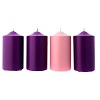 Buy Now:Candles for alters or for Advent wreaths with an opaque finish. The pack consists of 4 candles.
Buy Now:Candles for alters or for Advent wreaths with an opaque finish. The pack consists of 4 candles.
What are the four colours of Advent candles?
The colour of the Advent candles can always be purple, but white, a symbol of purity and light, and red, the Christmas colour par excellence, which also expresses Jesus’ love for us all, are also accepted.
Usually, Advent candles follow a precise colour scheme:
– first candle (Prophet’s Candle): purple or red;
– second candle (Bethlehem Candle): purple or red;
– third candle (Shepherds’ Candle): pink;
– fourth candle (Angels’ Candle): purple or red.
How do you use Advent candles?
The Advent candles symbolise Hope, Peace, Joy and Love, the message brought by the Child to the world. They are lit one at a time to express the idea of the light of Jesus becoming stronger and brighter as we approach Christmas.
When to blow out the first Advent candle?
Advent wreath candles must all be lit on Christmas Eve. They will be consumed slowly and autonomously, accompanying the expectation of the holiday.

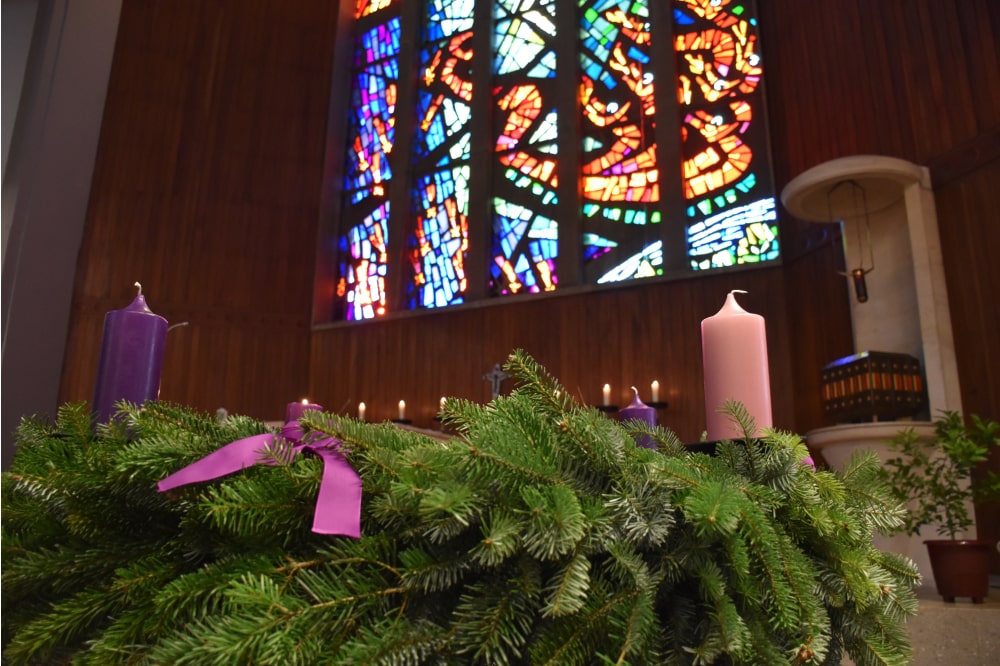
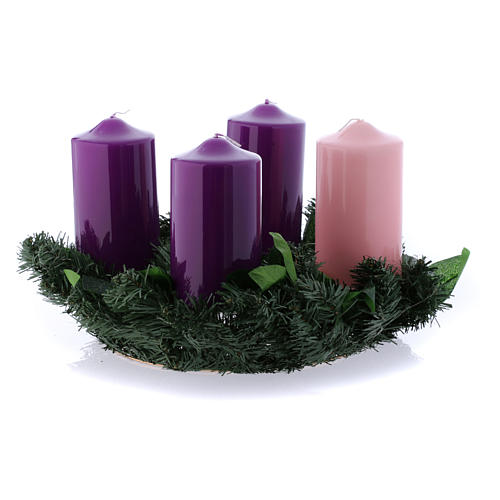
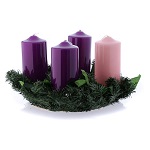
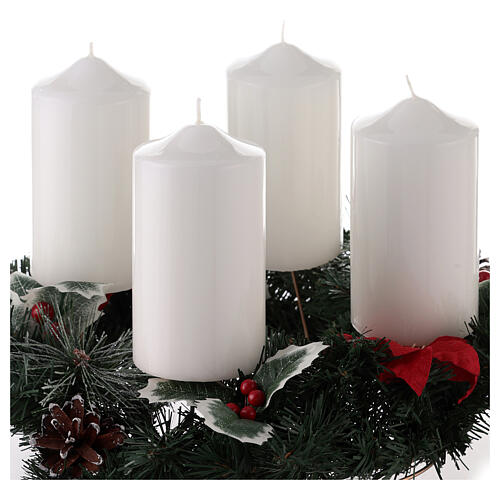
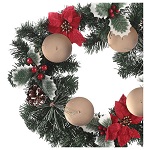
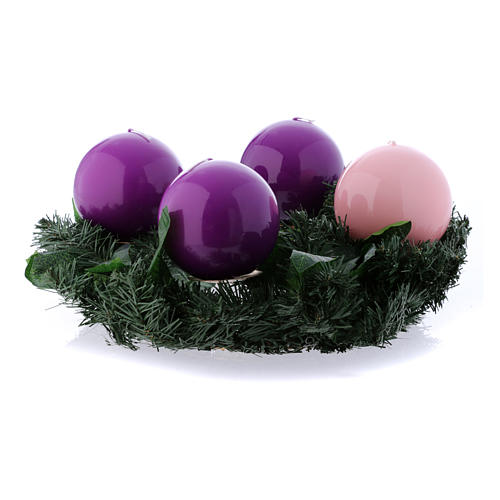
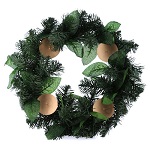
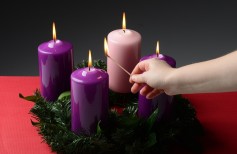
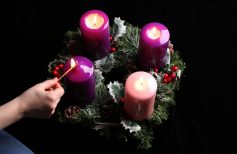

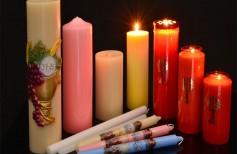

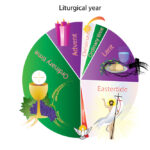

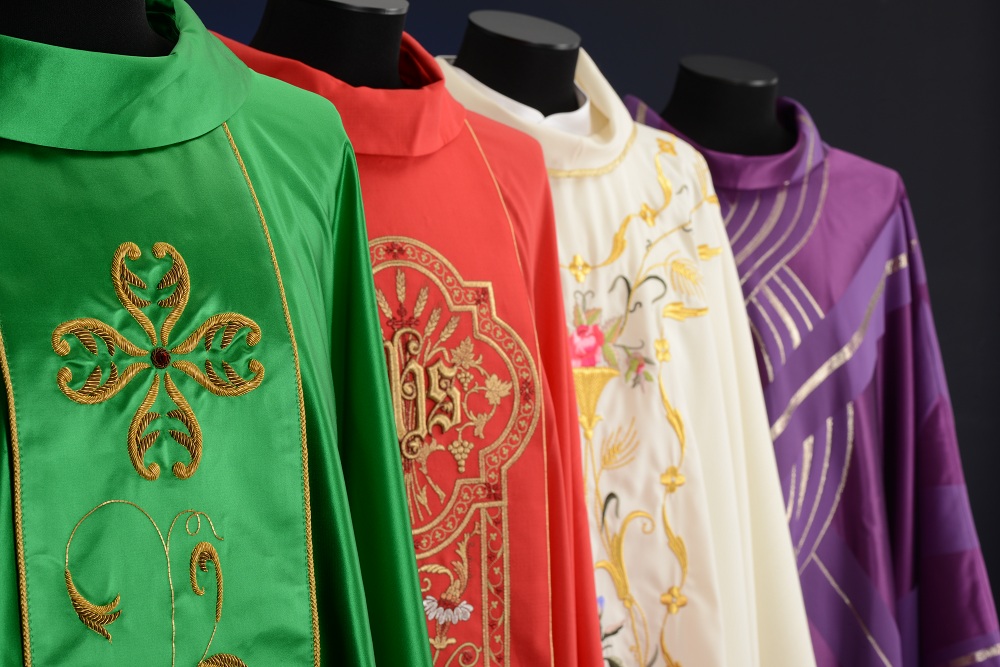







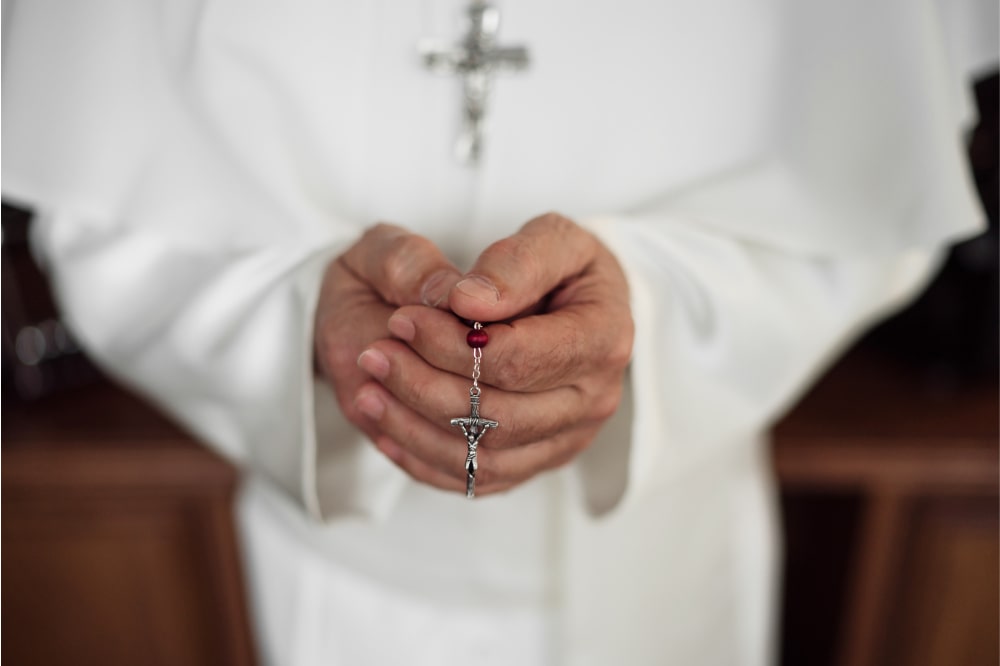
 5 June 2024
5 June 2024
